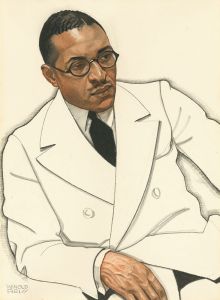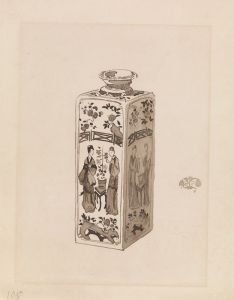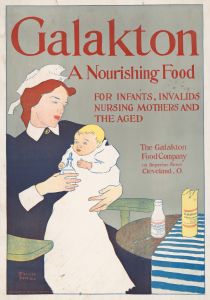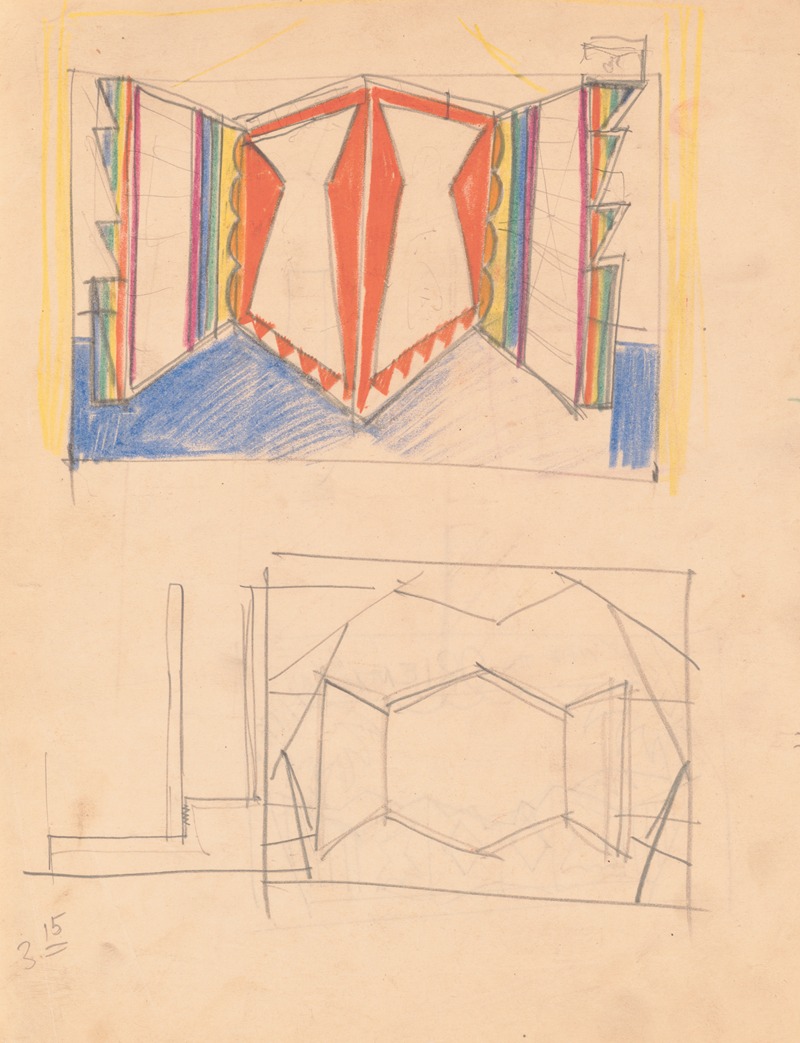
Designs for staged commercial or trade exhibition displays of coal-fired water heaters and furniture.] [Perspective sketch in orange with rainbow edges
A hand-painted replica of Winold Reiss’s masterpiece Designs for staged commercial or trade exhibition displays of coal-fired water heaters and furniture.] [Perspective sketch in orange with rainbow edges, meticulously crafted by professional artists to capture the true essence of the original. Each piece is created with museum-quality canvas and rare mineral pigments, carefully painted by experienced artists with delicate brushstrokes and rich, layered colors to perfectly recreate the texture of the original artwork. Unlike machine-printed reproductions, this hand-painted version brings the painting to life, infused with the artist’s emotions and skill in every stroke. Whether for personal collection or home decoration, it instantly elevates the artistic atmosphere of any space.
Winold Reiss was a German-American artist and designer known for his work in various fields, including portraiture, graphic design, and interior design. Born in 1886 in Karlsruhe, Germany, Reiss immigrated to the United States in 1913, where he became a prominent figure in the American art scene. He was particularly noted for his vibrant use of color and his ability to blend European artistic traditions with American themes.
Reiss's work often included designs for commercial and trade exhibitions, which were popular in the early to mid-20th century as a means for companies to showcase their products and innovations. These exhibitions were crucial for industries such as manufacturing and home appliances, including coal-fired water heaters, which were a common household item during that era. The use of coal as a primary energy source was prevalent before the widespread adoption of electricity and natural gas.
The perspective sketch in question, described as being in orange with rainbow edges, reflects Reiss's distinctive style. His use of bold colors and dynamic compositions was intended to capture the viewer's attention and convey the modernity and innovation of the products on display. Reiss's designs were not merely functional; they were also artistic expressions that elevated the commercial display to an art form.
Reiss's involvement in designing exhibition displays would have required a keen understanding of both the products being showcased and the audience's expectations. His ability to create visually striking and informative displays would have been an asset to companies looking to make an impact at trade shows. The integration of artistic elements into these displays helped to differentiate products in a competitive market and left a lasting impression on potential buyers.
In addition to his work on commercial displays, Reiss was also known for his contributions to interior design and architecture. He designed interiors for several notable buildings and spaces, often incorporating his signature style of vibrant colors and geometric patterns. His work in this field further demonstrated his versatility and ability to adapt his artistic vision to various contexts.
Reiss's legacy in the art and design world is significant. He was a pioneer in bringing modernist design principles to commercial art and played a crucial role in shaping the visual culture of his time. His work continues to be studied and appreciated for its innovative approach and its ability to bridge the gap between fine art and commercial design.
Overall, Winold Reiss's designs for staged commercial or trade exhibition displays, such as those for coal-fired water heaters and furniture, exemplify his unique artistic vision and his contribution to the development of modern design practices. His work remains a testament to the power of art to enhance and transform everyday objects and experiences.





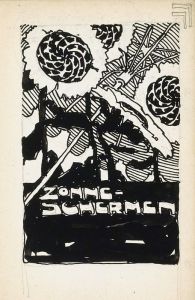
![Design for fine art print, ‘Three Figures’.] [Expressionist scene with African influence](/imgs/249288/s/winold-reiss-design-for-fine-art-print-three-figures-expressionist-scene-with-african-influence-54464834.jpg)
![Designs for lamps with triangular shades.] [Design with white, red, and metallic silver](/imgs/249315/s/winold-reiss-designs-for-lamps-with-triangular-shades-design-with-white-red-and-metallic-silver-40bb661.jpg)

![Graphic design drawings for Barricini Candy packages.] [3-D Study for 6 rectangular boxes](/imgs/249345/s/winold-reiss-graphic-design-drawings-for-barricini-candy-packages-3d-study-for-6-rectangular-boxes-2f81667e.jpg)
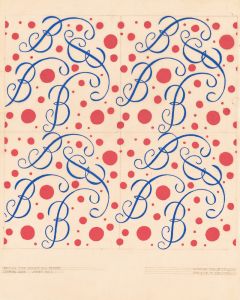
![Interior perspective studies for Restaurant Crillon, 15 East 48th Street, New York, NY.] [Interior perspective study](/imgs/249374/s/winold-reiss-interior-perspective-studies-for-restaurant-crillon-15-east-48th-street-new-york-ny-interior-perspective-study-57caabec.jpg)
![Designs for theater with black-framed proscenium and boldly colored settings.] [Study for stage light wall decoration, possibly for Caf ̌Crillon …..](/imgs/249420/s/winold-reiss-designs-for-theater-with-blackframed-proscenium-and-boldly-colored-settings-study-for-stage-light-wall-decoration-possibly-for-caf-crillon--fccff049.jpg)
![Studies of New York Coliseum, Columbus Circle, Convention Center.] [Color study perspective](/imgs/249444/s/winold-reiss-studies-of-new-york-coliseum-columbus-circle-convention-center-color-study-perspective-9184607e.jpg)
